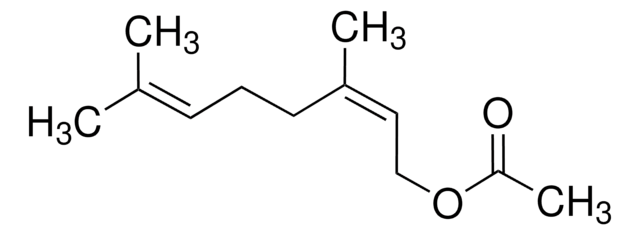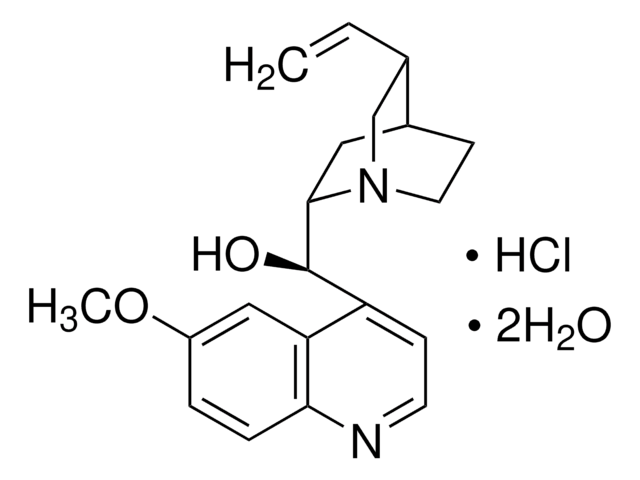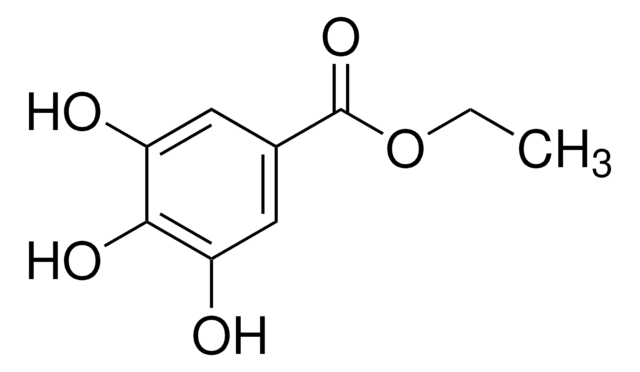W230618
Ácido cítrico
≥99.5%, FCC, FG
About This Item
Productos recomendados
origen biológico
synthetic
Nivel de calidad
grado
FG
Halal
Kosher
cumplimiento norm.
EU Regulation 1334/2008 & 178/2002
FCC
FDA 21 CFR 117
FDA 21 CFR 184.1033
Análisis
≥99.5%
formulario
powder or granules
lim. expl.
8 %, 65 °F
pKa
(1) 3.13, (2) 4.76, (3) 6.4
mp
153-159 °C (lit.)
solubilidad
water: 383 g/L at 25 °C
trazas de catión
As: ≤3.0 ppm
Cd: ≤1.0 ppm
Hg: ≤1.0 ppm
Pb: ≤0.5 ppm
aplicaciones
flavors and fragrances
Documentación
see Safety & Documentation for available documents
alérgeno alimentario
no known allergens
Organoléptico
odorless
cadena SMILES
OC(=O)CC(O)(CC(O)=O)C(O)=O
InChI
1S/C6H8O7/c7-3(8)1-6(13,5(11)12)2-4(9)10/h13H,1-2H2,(H,7,8)(H,9,10)(H,11,12)
Clave InChI
KRKNYBCHXYNGOX-UHFFFAOYSA-N
Información sobre el gen
human ... SRC(6714)
¿Está buscando productos similares? Visita Guía de comparación de productos
Descripción general
Aplicación
- Integrated time-series biochemical, transcriptomic, and metabolomic analyses reveal key metabolites and signaling pathways in the liver of the Chinese soft-shelled turtle (Pelodiscus sinensis) against Aeromonas hydrophila infection.: This study uses a combination of biochemical, transcriptomic, and metabolomic approaches to identify critical metabolites and pathways, including those involving citric acid, in the response of the Chinese soft-shelled turtle to bacterial infection (Ji et al., 2024).
- Enhancement of vitamin B(6) production driven by omics analysis combined with fermentation optimization.: The study integrates omics analyses with fermentation strategies to boost vitamin B6 production, identifying citric acid as a pivotal metabolic component in the optimization process (Tian et al., 2024).
Cláusula de descargo de responsabilidad
Palabra de señalización
Warning
Frases de peligro
Consejos de prudencia
Clasificaciones de peligro
Eye Irrit. 2 - STOT SE 3
Órganos de actuación
Respiratory system
Código de clase de almacenamiento
11 - Combustible Solids
Clase de riesgo para el agua (WGK)
WGK 1
Punto de inflamabilidad (°F)
Not applicable
Punto de inflamabilidad (°C)
Not applicable
Equipo de protección personal
dust mask type N95 (US), Eyeshields, Gloves
Elija entre una de las versiones más recientes:
¿Ya tiene este producto?
Encuentre la documentación para los productos que ha comprado recientemente en la Biblioteca de documentos.
Los clientes también vieron
Nuestro equipo de científicos tiene experiencia en todas las áreas de investigación: Ciencias de la vida, Ciencia de los materiales, Síntesis química, Cromatografía, Analítica y muchas otras.
Póngase en contacto con el Servicio técnico








